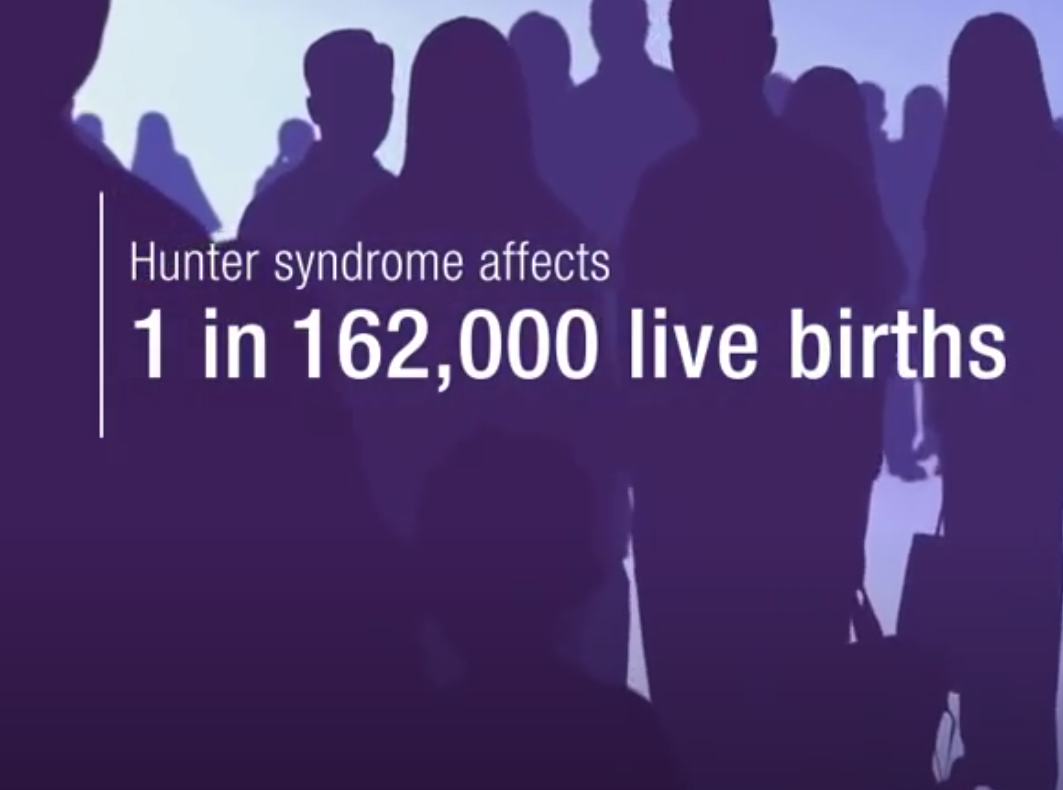
Lysosomal storage diseases consist of a group of about 50 rare inherited disorders that result from the build-up of toxic substances, usually certain lipids or sugars, as a result of an enzyme deficiency. One of these conditions, Hunter Syndrome (mucopolysaccharidosis type II) has attracted an increasing number of drug developers (including Takeda Pharmaceuticals, Denali therapeutics, RegenxBio, Avrobio, JCR Pharmaceuticals, Sangamo Therapeutics, Homology Medicines, and more) taking varying approaches to treatment, from enzyme replacement therapies and engineered drugs to gene and cell therapy approaches.
Patients with Hunter Syndrome have a mutation that limits the body’s ability to break down glycosaminoglycan (GAG) sugar molecules generated as a byproduct of cellular activity. The condition affects about 1 in 100,000-170,000 individuals, mostly males. The GAG build-up causes progressive damage to multiple organ systems including the lungs, heart, joints and brain, particularly affecting the development of children with the genetic disorder. Hunter Syndrome can present over a range from mild to severe forms of the disease, with the latter being a life-threatening illness leading to a life expectancy of less than 20 years.
An approved enzyme replacement therapy for Hunter Syndrome exists – Elaprase, from Takeda Pharmaceuticals – and several other companies have similar versions in development. Administered as a weekly intravenous (IV) therapy, Elaprase provides the missing lysosomal enzyme (iduronate-2-sulfatase, or IDS) needed to break down the accumulating sugar, and if given early, can delay or prevent some of the symptoms of the disorder. But Elaprase cannot cross the blood-brain barrier (BBB) and so is ineffective against the central nervous system (CNS) manifestations of the disease.
Denali Therapeutics has been developing an engineered version of the IDS enzyme, DNL310, using its proprietary technology designed to deliver biotherapeutics across the BBB for the targeted treatment of neurodegenerative diseases. In November, the company announced proof-of-concept from a Phase 1/2 trial showing that four weekly IV administrations of DNL310 saw a 76% mean reduction in CSF GAG levels from baseline, with normal healthy GAG levels achieved in 4 of 5 treated patients. JCR Pharmaceutical is also developing technology to deliver the IDS enzyme across the BBB.
Several companies are betting that a one-time gene therapy may be a better way to treat Hunter Syndrome; two such approaches are currently in clinical trials. Sangamo uses an adeno-associated virus (AAV) vector and its zinc finger nuclease technology to insert a normal copy of the IDS gene into the DNA of liver cells, with the aim of producing a continuous supply of the enzyme. However, Phase 1/2 results with their therapeutic candidate, SB-913, have been so far modest, without a clear benefit for patients. Moreover, while a higher level of enzyme activity was seen in one patient treated at a higher dose of SB-913, that effect faded when the patient experienced a suspected immune response to the AAV vector. Regenxbio is conducting one Phase 1/2 trial and planning a second with the company’s RGX-121 gene therapy that also uses an AAV vector delivered to the CNS directly into the cerebrospinal fluid. In addition, Homology Medicines recently announced its intent to develop a gene therapy for Hunter Syndrome. Their strategy is to deliver functional copies of the IDS gene to multiple tissues within the CNS and peripheral nervous system.
Avrobio, which is also developing treatments for other lysosomal disorders, is taking a cell therapy-based approach, leveraging a lentiviral gene therapy for Hunter Syndrome licensed for $8 million from the University of Manchester (U.K.). The company plans to use its candidate, AVR-RD-05, to modify a patient’s own hematopoietic stem cells with a transgene for IDS expression and a protein tag that improves the enzyme’s stability. The company’s hope is that the cells will engraft in the patient’s bone marrow and replicate further cells carrying the IDS transgene. Clinical trials of AVR-RD-05 are slated to begin in the second half of 2021. The company recently announced positive results with a similar approach in Gaucher’s disease, and reported that ongoing Fabry disease trials are demonstrating sustained durability for the company’s approach, with the first patient now 3.5 years from treatment.
Has the field of competitors grown too large for the size of this rare disease market? Will gene and cell therapy-based treatments, which offer a one-and-done treatment advantage, succeed against Elaprase and targeted replacement enzymes like Denali’s DNL310? How will multiple treatments be positioned once commercially available? Will they be used sequentially in case of treatment failure? Or will gene/cell therapies be used from the start, to potentially attempt a cure? We’ll be watching this space.